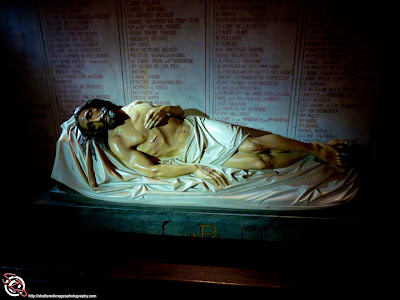
 |
| Miss Dani N. |
Martial Arts has been a favorite photography subject of mine for many years, as such I have photographed martial arts schools on many an occasion. Here are a few pointers to consider if you are planing on hosting a photographer for your school.
Get a photographer that knows martial arts. This should go without saying, but someone who specializes in family portraiture just is not going to be familiar with what martial arts should look like. They will have difficulty understanding why you are not thrilled with shots that are correct from a technical stand point but that do not really capture the essence of martial arts - because they do not understand that essence. Ideally find one that has studied martial arts AND has experience photographing it.
Be excited about the up coming shoot. Put the promotional material up on the school bulletin board, announce it frequently, put it in the newsletter, send out email announcements, promote the Facebook event, if the photographer does not make an event make one yourself. If you are excited about the up coming shoot then your students will be too.
Keep the students grouped together, if at all possible host the shoot during class time, then the students will already be used to being there. Nothing can make a shoot drag on like only having 2-4 students an hour. A good photographer will have great time management skills and will easily be able to help 8-10 students an hour get good quality photos.
Help the students choose 2-3 poses before the day of the shoot. All to often a student comes up for a photo and when I ask “what would you like to do?” the response is “I don’t know.” what are you good at “I don’t know” do you want to do a punch a block or a kick “I don’t know....” Some poses work really well for photos: front kick, side kick, round kick, most anything in a good front stance or back stance. Help the student to choose a couple of three that is within their skill level and the shoot will flow much more smoothly. This way the photographer will be able to spend their time positioning the student at the best angle for the camera and the lights AND spend time helping you choose from 2 or 3 great shots instead of spending time trying to come up with a pose that the students want and is capable of doing. Remember you know your students skills, the photographer is likely just meeting them for the first time.
When possible cancel classes during the photo shoot or let the photographer set up in a separate space from where classes are being held. I understand the importance of keeping an active class schedule for students, but martial arts classes are very loud, it makes it difficult for the student to hear the photographer and can really make getting good photos, particularly of tiny tigers that are easily distracted, a real challenge.
Scheduling a photographer that really knows and has a passion for martial arts, being excited about your shoot and helping students pick poses are are important to a great turnout and epic photos. While minimizing distractions and limiting down time can really help that shoot to run smoothly. These are just a few things that can help turn a good shoot into a great shoot.
Follow Us
FaceBook
https://www.facebook.com/pages/Shattered-Images-Photography/274273146947
Twitter
http://twitter.com/Shatteredimages
Website
http://shatteredimagesphotography.com/ma_index.html





.jpg)


